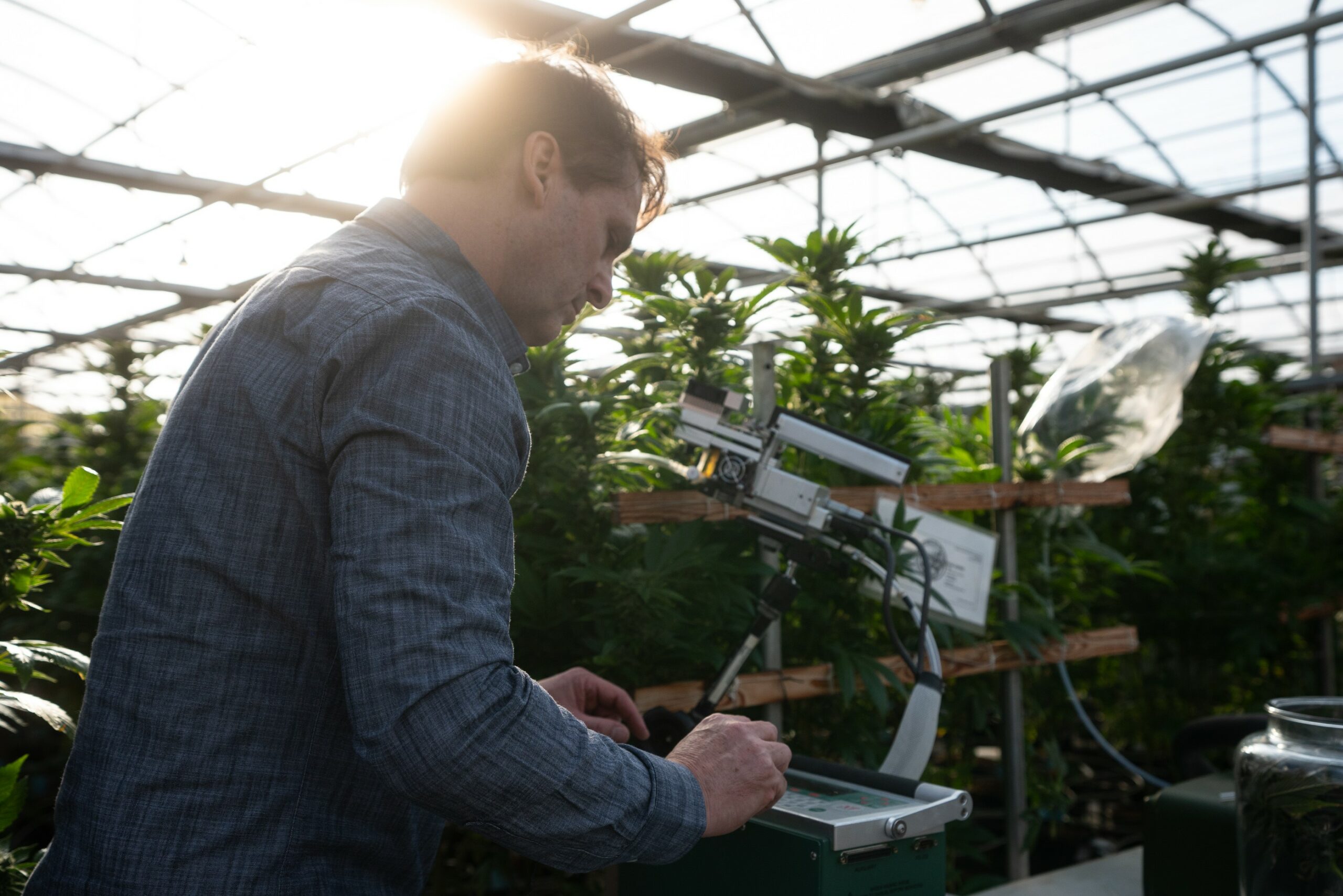Byers Emissions Analysis’ Chief Scientific Officer, William Vizuete, PhD., designs field study for important research into Colorado indoor commercial cannabis cultivation facilities and their collective impacts on air quality.
In the recent study produced by the Colorado Department of Public Health and Environment (CDPHE) and published through AWMA, air samples were collected at the exhaust points of four indoor commercial cannabis cultivation facilities in Denver and were analyzed for three groups of compounds common to cannabis emissions: monoterpenes, terpenoids and sesquiterpenes. Using this measurement data and flow rates from exhaust points, emission rates were determined that represent the four types of cultivators that were sampled. These facilities included three indoor cultivators ranging in size from medium (over 20,000 harvested plants per year) to large (over 100,000 harvested plants per year). Terpene profiles and concentrations varied widely based on operational activities, room conditions, as well as HVAC methodology and exchange rates. It is also important to note that although several facilities were sampled, it may not be representative of the large variety of cultivators, strains, HVAC, or control mitigation technologies that exist in Denver. Nevertheless, policy makers may assume that these facilities are representative and consider these emission rates and modeling results when establishing rules and regulations applicable to all facilities in Denver. While such a top-down approach produces an estimate of an emission inventory that could be used to provide insight into commercial cannabis cultivation’s collective potential to contribute to the formation of ozone on a regional scale, it is not without limitations.
The Colorado study used the newly developed emission inventory, and air quality models, to predict impacts on regional scale formation of ozone and found insignificant increases in daily maximum 8-hour ozone values. This is good news for regional ozone concerns, however, these model predictions use a coarse resolution appropriate for a large city, but less so for estimating impacts at the community scale. Such assessments require finer resolved models coupled to an emission inventory.
Byers Emissions Analysis (BEA) offers both the top-down approach described above and a bottom-up approach to estimate a commercial cannabis cultivation’s potential emissions impacts on ozone, particulate matter, or odor. Both approaches to building an emission inventory share the same methodology that utilizes Gas Chromatography-Mass Spectrometry (GC-MS) for speciation and the determination of a gas-phase emission rate. We have the modeling capabilities for prediction of impacts to regional scale ozone (like with the Colorado study described above) as well other models to assess indoor air quality and potential impacts to local communities.
The use of a top-down or bottom-up approach results in different advantages. In a bottom-up approach, the BEA team conducts leaf enclosure measurements for determining the exact compounds being emitted from the specific plants being grown thus creating emission factors based on a specific strain (or strains). This is useful in not only building a more robust emission inventory, but it also allows for the prediction of potential emissions from proposed additional strains or even a new cultivation operation.
With a top-down approach, BEA relies exclusively on collecting ambient air sampling at a cultivation facility’s exhaust points and thus provides a composite reading of all strains found in the facility. This does provide a snapshot emission profile of a facility for faster modeling, but runs the risk of becoming obsolete the moment that facility changes their control technology, HVAC practices, or introduces a different strain.
There continues to exist large variability and uncertainties influencing the building of a useful commercial cannabis emission inventory. At BEA, we believe it is crucial to utilize all methods for building emission inventories and research how emissions vary based on cultivar, life stage of the plants, as well as activities within the sampling space (e.g., trimming manually versus mechanically). Without standardized emissions factors and an established emission inventory, commercial cannabis VOC modeling is determined based on assumed values from limited samples producing uncertain results and potentially inadequate or ineffective regulations.
Interested in better understanding your facility’s emissions profile? We’d love to talk. Contact us today for a no-cost consultation.


